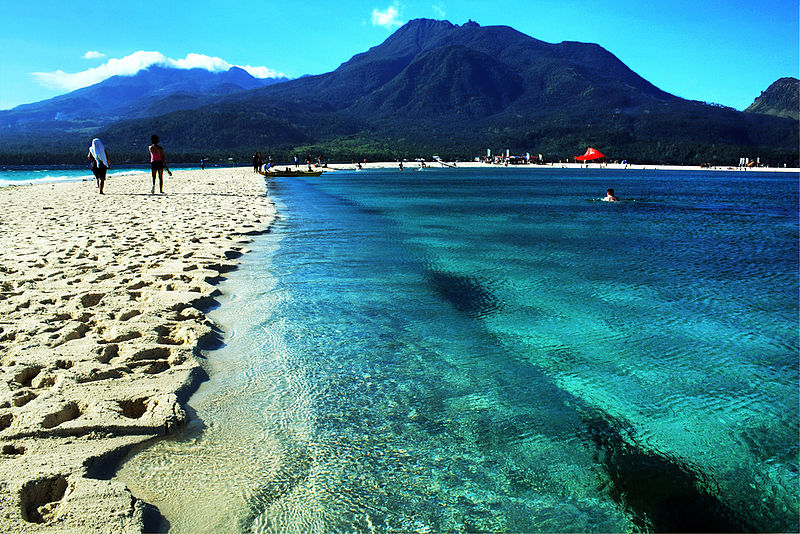|
Camiguin Island is a pear-shaped-island in the southern part of the Philippines. The island plays host to seven volcanoes, including the still-active Mount Hibok-Hibok. As a natural paradise, the exquisite island of Camiguin, which is home to varied ecosystem, boasts of untouched coastlines with swaying coconut trees and dotted with hot and cold springs. Fine beaches offer sun-filled days of relaxation with the clear blue water, enchanting marine life and beautiful coral reefs. The entrancing beauty of nature while trekking the heights of Camiguin volcanoes, exploring unknown trails and caves, enjoying the spray of majestic waterfalls together with panorama of fields and seas will leave every person at awestruck.
 |
| (Source) |
 |
| (Source) |
Each year in October, a festival is held celebrating the Lanzones, a small grape-sized tropical fruit grown all over the island. The week-long Lanzones Festival is one of the more colorful events in the Philippines. During the Lanzones Festival, people, houses, street poles, and other places are decorated with the Lanzones Fruit and Lanzones Leaves to signify abundance. Locals dance with happiness commemorating the legend of a beautiful, young maiden who changed the taste of the fruit from bitter to sweet. Street dancing highlighting the culture, tradition and the fruit of Camiguin invites domestic and foreign tourist alike to watch the scenic grand parade of the golden fruit during the Lanzones Festival. Parties, cultural shows, beauty pageants, and trade fair that features local handicraft and products are also part of the celebration.
The Camiguin Island has a rich preservation of Philippines history. Several centuries-old Spanish Colonial and 20th century churches are found in various parts of the island. Beautiful and ornate ancestral homes that date back to the Spanish Colonial Period and American Colonial Period, are still abundant and can be found along the streets of Camiguin.
 |
| (Source) |
The Camiguin Island is also famous for the Sunken Cemetery. During the volcanic birth of Mt. Vulcan that lasted from 1871 to about 1875, some areas in the town of Bonbon subsided, sinking the cemetery of the town to below sea level. The place is commemorated by a huge cross erected in 1982.
 |
| (Source) |



0 comments:
Post a Comment